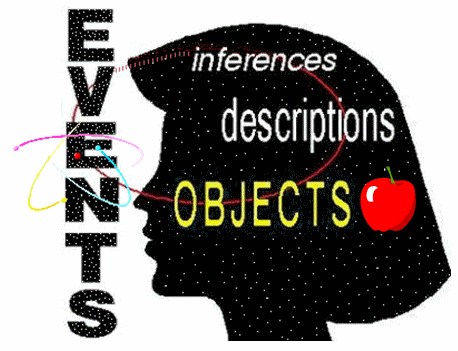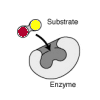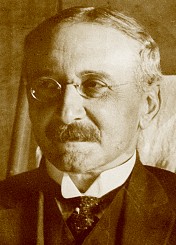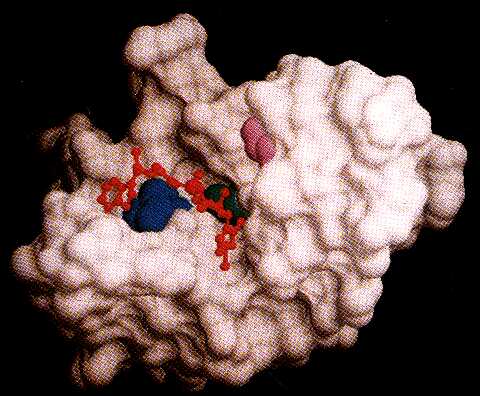
Jacques Loeb's Influence on Korzybski
Written 1995, revised 2011 by Steven Lewis
Life, like the ticking of a clock, emerges from an interaction of its parts. To more fully understand life we must study these parts and their interactions on different levels of organization. On the chemical level the human body is composed of about 15 percent by weight protein, and these proteins serve a wide variety of essential functions: they regulate the manufacture and breakdown of other chemicals in the body (enzymes), regulate movement of substances across cell membranes (channels), monitor conditions on the surface of the cell (receptors), generate and perpetuate nerve impulses, enable muscles to contract, and serve as our structural foundation.
By the dawn of the 20th century biologists and chemists were intently exploring the behavior of proteins to try to ascertain how they performed their varied tasks. One of the tools used to decipher the function of proteins was an emerging hybrid of physics and chemistry called colloid science that studied the behavior of huge molecules and molecular aggregates (micelles, membranes, pores, organelles ...). Proteins fit into the category of colloids because they are too small to be clearly seen with a light microscope but are composed of more than a thousand atoms. Their small size but enormous surface, which is both complex and flexible like the surface of a sponge, is crucial for their function. Even a small alteration in the shape or electrical charge of a protein can have major consequences for its function, though its chemical composition remains undisturbed.

 One of the pioneers in exploring the structure of the living medium from the perspective of colloid science was Jacques Loeb (1859-1924), director of the division of experimental biology at the Rockefeller Institute for Medical Research (now Rockefeller University) in New York City. I think it is fair to say that Loeb had a greater impact on Korzybski's work than any other biologist, beginning before Korzybski's 1921 book Manhood of Humanity.
One of the pioneers in exploring the structure of the living medium from the perspective of colloid science was Jacques Loeb (1859-1924), director of the division of experimental biology at the Rockefeller Institute for Medical Research (now Rockefeller University) in New York City. I think it is fair to say that Loeb had a greater impact on Korzybski's work than any other biologist, beginning before Korzybski's 1921 book Manhood of Humanity.
Initially Korzybski was attracted to Loeb's writings because of his structural (instead of metaphysical) view of life and his organism-as-a-whole perspective. In Manhood Korzybski wrote: "My friend ... drew my attention particularly to the books of Dr. Jacques Loeb. I found there a treasury of laboratory facts which illustrate as nothing better could, the correctness of my theory ... a theory which analyses the functions and reactions of an organism as a whole " (p236). The following year, 1922, McGraw-Hill published Loeb's final book "Proteins and the Theory of Colloidal Behavior." No doubt Korzybski read it immediately (he referenced it at the end of his first paper on Time Binding in 1924). Loeb's book was in response to the growing interest in evaluating proteins from a colloidal perspective and was probably key to stimulating Korzybski's interest in the study of biocolloids.
Colloid science began to dissolve into a variety of specialties in the 1930s as new laboratory tools permitted the detailed study of the structure and function of specific colloids. In the life sciences, for example, the general study of the "colloidal behavior of protoplasm" gave way to molecular biology and specialists devoted to the detailed study of specific biocolloids, now usually called "macromolecules," such as hemoglobin, DNA, sodium channels, serotonin receptors ...) and molecular assemblies (membranes, chromosomes, the cytoskeleton ...). In effect, the study of individual trees gained precedence over the study of the forest. Korzybski's interest in biocolloids was structural and epistemological and independent of any particular theory of colloidal behavior and reflected a broad view of the importance of this dynamic subcellular "world of neglected dimensions of the early 20th century" -- the world of macromolecules and molecular aggregations -- for understanding macroscopic biological functions and dysfunctions of the organism-as-a-whole.
Evans and Wennerstrom assert in their 1999 textbook The Colloidal Domain: Where Physics, Chemistry, Biology and Technology Meet that "after the 1930s, colloid science was relegated to the intellectual backwaters of science where it survived through the actions of scientific enthusiasts and researchers with a more applied perspective. However, the last two decades have seen the emergence ... of a new realization that the fundamental motivation for the reductionist strategy in science is to synthesize knowledge about parts into an understanding of the whole. Thus, as we enter a new century, the scientific frontier is passing through the colloidal domain once more.... A holistic approach has been adopted in many discplines such as molecular biology, biochemistry, biophysics, solid state physics, mesoscopic physics and soft condensed matter physics. Colloid science can be seen to provide the integrating intellectual framework." (page 603)

 The cell (LEFT) -- the fundamental unit of life -- is composed of a vast network of membranes of colloidal dimensions (about 6-8 nanometers wide) that present an enormous dynamic surface area as well as compartmentalize cell functions. These membranes are colloidal assemblies of diverse composition, especially proteins and phospholipids (RIGHT). The outer cell membrane -- the plasma membrane -- is electrically polarized and contains colloidal protein aggregates called ion channels whose structure ("conformation") can change in the presence of specific chemicals, such as neurotransmitters, or voltage changes across the membrane resulting in cell responsiveness to stimuli and signal conduction (the "action potential").
The cell (LEFT) -- the fundamental unit of life -- is composed of a vast network of membranes of colloidal dimensions (about 6-8 nanometers wide) that present an enormous dynamic surface area as well as compartmentalize cell functions. These membranes are colloidal assemblies of diverse composition, especially proteins and phospholipids (RIGHT). The outer cell membrane -- the plasma membrane -- is electrically polarized and contains colloidal protein aggregates called ion channels whose structure ("conformation") can change in the presence of specific chemicals, such as neurotransmitters, or voltage changes across the membrane resulting in cell responsiveness to stimuli and signal conduction (the "action potential").
Korzybski recognized in the 1920s the significance of macromolecules and molecular aggregates and their surface charges and configurations for understanding biological functions. His chapter on colloidal behavior in "Science and Sanity" attempted to relay this significance to our daily evaluations and thereby refocus our orientation from static macroscopic to dynamic submicroscopic levels of organization.
According to Evans and Wennerstrom:
"Living systems are made up largely of proteins, polyelectrolytes and amphiphilic molecules contained in an aqueous medium. By their very size, such molecules possess colloidal properties. More importantly, they self-assemble into a great variety of organized structures that perform extremely sophisticated chemical transformations. Life processes involve the control and transformation of colloidal assemblies, and many diseases are associated with malfunctions at the colloidal level. The new level of knowledge made available by colloidal science has considerably enhanced our understanding of interaction forces that control biological processes." (introduction, page 37)Books by Jacques Loeb:
Books about Jacques Loeb:
Go to General Semantics Home Page ||| Go to Steven Lewis Home Page